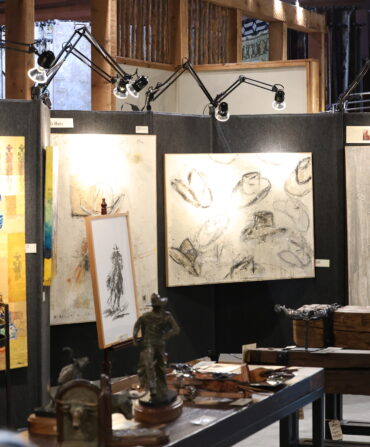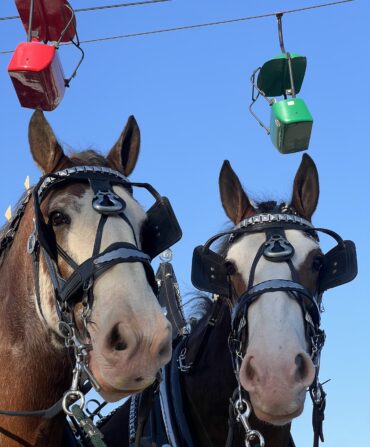These days, Stamer himself spends a lot of time returning—to his memory and his hometown. Lean and blue-eyed, with a scruff of beard, the thirty-three-year-old artist grew up in Durham County, North Carolina, in an area that serves as a buffer zone between country life and the scholarly orbit of Duke University. The landscapes and agrarian ruins that captured his imagination as a child now peek through his paintings, equally realistic and abstract, just as they are in his memory. He uses oil paints, slower drying than other media and thus easier to manipulate.
“I do everything I can to deteriorate, distort, and integrate abstraction so there is a sort of corrosion to the picture,” he says. “These places were ruins back then, but they’re always changing and I’m kind of documenting that change. It’s a lot of painting, taking away, and building back again.”
Now, as he prepares for a show opening April 16 at the North Carolina Museum of Art, in Raleigh, Stamer is taking a bold new turn with his work. His latest painting, A little past Lake Michie 17, is a six-by-eight-foot panel, marked with four thick vertical blue stripes over a field of white. At first glance the stripes are abstract, almost three-dimensional, but a closer look reveals the makings of a barn and a sky full of clouds peering through the blue, as though the paint provides a window into the past.

Photo: Lissa Gotwals
His “After Lange 4”, based on a 1939 photograph of a tobacco barn by Dorothea Lange.
“This direction is my main focus,” Stamer says with excitement. “It hits on so many dualities. From one sense, it’s just three, four, five swipes of paint, so it’s speed and emptiness and immediacy. But then you get into this depth and stillness. It’s hard to reconcile those things. My brother calls it the magic paintbrush.”
For inspiration, Stamer photographs the scenic byways he traveled as a child. The images become fodder for the brush, but there is nothing magic in the bristles. The spell comes from Stamer’s ability to share a part of his past while leaving enough empty space for viewers to “paint in” impressions of their own.
Although he splits his time between Brooklyn and Durham, Stamer’s work has shown at galleries worldwide, from Nashville to Tokyo. The upcoming exhibit in Raleigh features nine of his compositions alongside work from Greg Lindquist, a fellow North Carolina native whose included paintings focus on the catastrophic impact of the 2014 Duke Energy coal ash spill on the Dan River. In May, Stamer will take a new selection of work to Berlin. And although that may be a long way from Durham County, he says the themes of his paintings are universal.
“There is a kind of loss or inability to return to these places we knew as children,” Stamer says. “Maybe they’ve started to sag, or maybe they’re gone. These ideas of home and place and memory and time—these are things that everyone has.”








